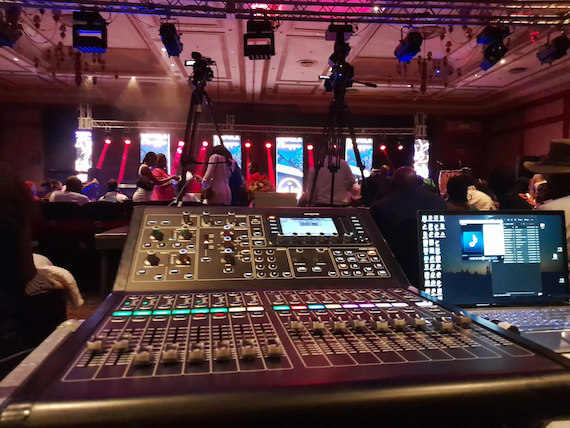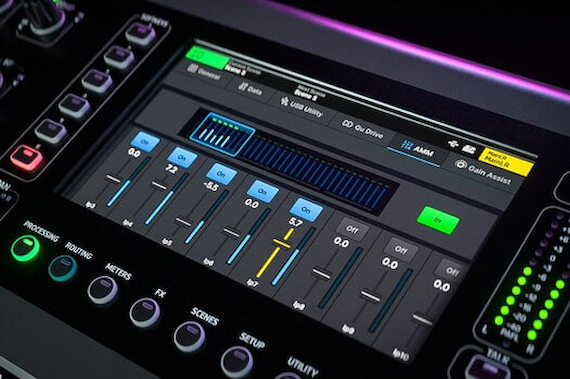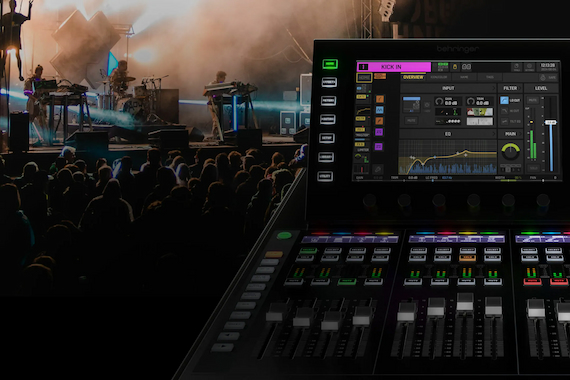What if you could carry a stadium-sized sound system in a briefcase? That’s the magic of today’s digital consoles. For decades, sound engineers relied on towering analogue desks filled with knobs, sliders, and cables stretching for miles. While these analogue consoles were powerful, they were bulky, limited in memory, and difficult to transport.
Enter the era of digital technology. Just as smartphones replaced flip phones with endless features in one device, digital consoles have transformed the world of live sound and recording. Compact, flexible, and incredibly powerful, they allow engineers to manage sound with unprecedented precision and efficiency.
What Is a Digital Console?

At its core, a digital console is a mixing desk that takes in analogue audio signals, converts them into digital format, and processes them with advanced software tools before converting them back to analogue for output. Instead of relying solely on physical circuitry, these consoles harness the power of digital processing to expand possibilities.
Core Components of Digital Consoles
- Faders and Controls: Unlike analogue consoles, where each control is permanently assigned, many reliable digital consoles feature motorised faders that can switch or “layer” between different groups of channels. This means fewer physical controls can manage more channels.
- Touchscreen/Display: A central touchscreen or display provides visual feedback for every channel, effect, and routing option. Engineers can dive into detailed menus, EQ curves, and monitor mixes with just a swipe.
- I/O (Inputs/Outputs): Modern consoles provide multiple connection options for microphones, instruments, and playback devices. Many support digital networking protocols like Dante, AVB, or MADI, enabling seamless communication between stage boxes, amplifiers, and recording systems over a single cable.
The Key Advantages of Going Digital
Digital mixing isn’t just about looking sleek; it’s about making sound management smarter, faster, and more reliable.
Workflow and Recall
One of the greatest advantages of professional consoles is the ability to save and instantly recall entire shows or scenes. Imagine walking into a venue, plugging in your console, and having every EQ, fader, and effect exactly where you left it from last night’s performance. This feature is a game-changer for touring engineers and houses of worship that switch between multiple performers weekly.
Built-in Processing
Gone are the days of carrying racks of compressors, EQs, and reverbs. Today’s consoles come with studio-grade processing on every channel, compressors to control dynamics, EQs to shape tone, and reverbs or delays to add depth. Not only does this cut down on physical equipment, but it also ensures consistent quality from one gig to the next.
Connectivity and Networking
Digital consoles thrive on connectivity. Instead of dozens of heavy analogue multicore snakes, you can run all your signals over a single Ethernet cable. Protocols like Dante allow for easy integration of wireless mics, in-ear monitor systems, and recording rigs without complicated wiring.
Compact Size
A desk that once required a truck to transport now fits in the backseat of a car. Compact size doesn’t mean compromise. Today’s consoles pack immense power into small footprints, making them ideal for mobile sound engineers, small venues, or large touring productions where space is at a premium.
Choosing the Right Digital Console

With so many models available, finding the right console depends on your specific needs. Here’s a framework of questions to guide your decision.
Inputs and Outputs
Think about the types of events you typically handle. A small acoustic setup might only need 16 inputs, while a large rock concert could require 48 or more. Overestimating slightly is smart. Having extra I/O gives you flexibility for unexpected instruments or future growth.
Features and Functionality
Do you need multiple monitor mixes for a band? Will you be doing multi-track recording directly from the console? Do you require advanced effects or customisable routing options? Listing your “must-have” features will help narrow down models quickly.
User Interface
Some consoles are designed with beginners in mind, featuring intuitive layouts and responsive touchscreens. Others are built for seasoned professionals, offering deep customisation but requiring more technical know-how. Demoing a console or watching tutorials can give you a feel for its usability.
Budget
Digital consoles come in tiers:
- Entry-level models are great for small venues, rehearsal spaces, or beginner engineers.
- Mid-range consoles suit churches, schools, or mid-sized venues where flexibility is key.
Professional digital consoles are top-tier options, packed with advanced features and designed for touring acts, theatres, and broadcast environments.
The Future of Sound
From small clubs to world tours, a digital console has become the backbone of modern audio production. Their ability to combine power, flexibility, and portability makes them indispensable tools for sound engineers everywhere. While analogue consoles maintain a legacy of warmth and simplicity, the future clearly belongs to digital technology. With endless recall options, built-in effects, networking capabilities, and compact designs, professional digital consoles are redefining how we think about live sound and recording.
In short, if you’re looking to elevate your audio game, investing in a digital console isn’t just about keeping up with technology. It’s about unlocking new creative possibilities and ensuring your sound is as powerful as your performance.


